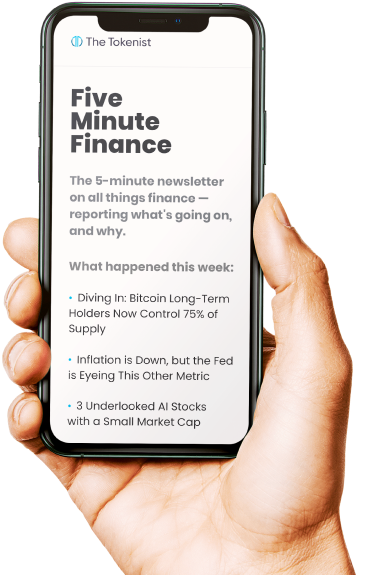
LUNR: Intuitive Machines in the Shadows of Success and Setbacks
Last Wednesday, lunar exploration company Intuitive Machines (Nasdaq: LUNR) announced a plan to borrow $300 million for continued operations. Because this debt is in the form of convertible notes, which can later be turned into stock, carrying 2.5% interest until 2030, the move has the potential to dilute the value of the company’s shares. Consequently, LUNR shares are down nearly 7.75% over the last five trading days. Presently priced at $9.08 per share, LUNR stock is far from its 52-week average of $11.30. Given that Intuitive Machines runs Moon missions once per year, making it a cyclical company, is this an opportune moment to gain lunar exposure?
Intuitive Machines’ Cadence and Partial Success
Intuitive Machines caught the public spotlight in February 2024, with the first successful Moon landing mission since 1972. The IM-1 mission running the lunar lander Odysseus wasn’t 100% successful due to an unscheduled tipping upon landing. Nonetheless, the tilt angle was moderate enough for all instrument payloads to remain functional.
A year later, the company’s IM-2 mission landed Nova-C lander, dubbed Athena. That time, the lander completely tipped to its side as its laser altimeters failed to properly gauge the descent. The particular landing region at the Moon’s south pole, with unique lighting conditions and long shadows, also made it difficult for the landing system to perform.
As a result, IM-2 failed to complete as the battery quickly drained, which prevented the deployment of the drill and other scientific instruments. NASA later confirmed it had only received 250 MB worth of data.
Under NASA’s Commercial Lunar Payload Services (CLPS) contract, Intuitive Machines has two missions left, IM-3 for 2026 and IM-4 for 2027, both within the same periods of February-March.
Interestingly, Texas-based Firefly Aerospace landed its first Blue Ghost lander a few days earlier completely successfully, having run operations for 14 days as planned. However, the company is not publicly traded.
Nonetheless, as Firefly prepares for its second and third missions, it gained valuable insight to share with both NASA and Intuitive Machines. Likewise, IM gained first-hand experience on how to overcome challenging terrain for its last two missions, IM-3 and IM-4.
Join our Telegram group and never miss a breaking digital asset story.
Intuitive Machines’ Viability Beyond Government Contracts
Intuitive Machines is a publicly traded company, but heavily reliant on taxpayer funding. And as taxpayers fund NASA, the government agency awarded Intuitive Machines last September up to $4.82 billion within the Near Space Network (NSN) contract.
NSN and CLPS make for NASA’s integrated approach to establish both communication infrastructure and surface payloads for future logistics. The NSN funding runs up to September 30, 2029, potentially extending to September 30, 2034.
In addition to lunar landings, the company submitted this Thursday a proposal for NASA’s Lunar Terrain Vehicle Services (LTVS) contract. This would be much more exciting for the public as it features a wheeled Moon RACER vehicle, depicted as CGI animation here.
Last April, NASA awarded the company $30 million to design this lunar terrain vehicle (LTV) for payload delivery, surface mapping, and data transmission. Moon RACER, classed as Nova-D lunar lander, had already been stress-tested at Meteor Crater National Landmark in November 2024.
Another government contract is Orbital Transfer Vehicle (OTV) for in-space mobility, worth $9.8 million, awarded to IM at the end of July. Like LTV design, it is a gateway to more contracts as the lunar infrastructure expands both in orbit and on the surface. Of similar value, at $10 million was the Texas Space Commission award for the company’s Earth Reentry Program.
For commercial customers, Intuitive Machines is building data relay network Khonstellation with York Space Systems’ satellites. The first Khon-1 was within the IM-2 mission, with Khon-2 planned for IM-3.
In early August, the company signed a definitive agreement to acquire KinetX, an Arizona-based systems engineering and deep space navigation company. KinetX would also enable the company to contribute to Mars missions as well. This expansion is the likely driver for the aforementioned $300 million convertible debt.
Ultimately, if the company demonstrates more consistent mission completion, the goal is to diversify beyond government contracts into “commercial, civil, and national security space operations.”
To that end, the company also partnered with Space Forge for space-based semiconductor manufacturing. This is in addition to the existing relationship with Rhodium Scientific for in-space biopharmaceutical testing.
Of course, for all of these projects to ramp up, a government-driven infrastructure would have to be established first.
Intuitive Machines’ Finances and Price Targets
On August 7th, Intuitive Machines reported its Q2 2025 earnings, having increased its revenue by 21% from the year-ago quarter to $50.3 million. Notwithstanding the recent convertible debt issuance, the company has zero debt, having ended the quarter with $345 million in cash.
From the year-ago’s accumulated deficit of $996.4 million, IM reduced it to $347.68 million this quarter. For this first six months, the company accrued $37.2 million net loss, which is also a major reduction for the same period last year at $101.37 million net loss.
According to WSJ’s forecasting data, both the average and the bottom LUNR price targets are now significantly above the present price level. While the bottom price target is $10.50, the average LUNR price target is $14.94, against the present price of $9 per share.
Considering the amount of projects in the pipeline to excite the public’s imagination, it is safe to say this constitutes a buy-the-dip moment. With that said, Intuitive Machines now faces a great deal of pressure to flawlessly execute IM-3 next year, which would be the company’s first 100% successful deployment.
Disclaimer: The author does not hold or have a position in any securities discussed in the article. All stock prices were quoted at the time of writing.




